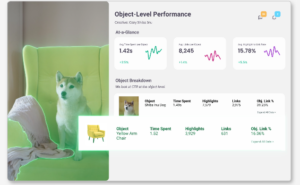By Steve Miller-Jones, VP edge strategy and solution architecture at Limelight Networks
A few years ago, the gaming industry predicted the world domination of console-less or ‘cloud’ gaming. Since the launch of Steam in the early 2000’s as a platform for delivering patches and updates, it had become clear that online platforms could become the fastest and most convenient way to deliver gaming content to consumers – with the right infrastructure in place. As the power and speed of consumer internet connections increased, it seemed that very soon the entire gaming experience could be delivered online.
Whilst this has already come true for some regions, in the UK there’s a different story, with platforms such as Xbox and PlayStation still holding strong, and new consoles being released by both industry juggernauts later this month. Both consoles feature online services and features, which promise to revolutionise the gaming experience.
Even amongst new subscription services and alternatives to console gaming, these new console launches are much anticipated. Indeed, when Limelight looked into The State of Online Gaming this year, we found that the majority of global gamers surveyed (56%) said they would NOT subscribe to a live streaming console-less gaming service when available in their area. One of the main reasons given was a misconception that console-less offerings would not be able to match gamers’ expectations for high-speed and low-latency gameplay.
So, how can these legacy platforms ensure they level up the gameplay experience in this next generation of hybrid consoles?
The role of the CDN in online gaming
Online gaming is a more global activity than ever before. New game releases are causing serious hype among gamers, and there is a need to deliver content simultaneously across many geographies, which can differ in their delivery infrastructures and local content requirements. To achieve a seamless experience for gamers connecting from all over the world, online or hybrid gaming platforms need to ensure they have a resilient multi-vendor strategy. This approach offers global reach with the local data centre footprint to bring content delivery closer to gamers wherever they are, preventing lag or download delays being introduced at the last mile.
With the launch of Xbox Series X and PS5, the way that these consoles handle downloads of gaming content are changing. Microsoft and Sony will both rely on CDNs to continue to uphold gamers’ high expectations and deliver immersive gaming experiences, and now the game developers can also help to ensure that gamers are getting exactly the downloads and data that they need. The PS5 is expected to handle downloads differently to the PS4, for instance enabling just the single-player version to be downloaded without the multiplayer capabilities when needed. CDNs will be helping ensure high quality experiences through advanced caching techniques and leveraging real-time analytics tools.
New game releases are still going to be large in size and some games are going to become available as download or digital only, without a disk to put into the console. Critical gameplay action and wide adoption of the new consoles will need to be supported by strong delivery partners who can help ensure gamers are not frustrated through delays and poor performance.
Still not ‘game over’ for consoles
The early industry test case of Google Stadia has shown that when gamers’ reactions to a new platform are lukewarm, brand reputation and equity are at stake. One of the main outtakes from the initial consumer response was that the new platform was playable enough, but simply didn’t quite live up to their audience’s expectations when it came to quality. It will come as no surprise that performance issues and delays are a major turn off for British players when it comes to online gaming platforms, with 16% saying concerns about this topic are the reason they wouldn’t sign up to an online service.
As for the wider gaming community, in the UK 65% of British gamers told us that the cost of such services is too high. For new services to make the cut and earn their subscription dollars each month, this means content is king. New online services will need to tailor their offers of high-quality games and deliver with seamless pixel-prefect video to prevent consumers from logging off.
As the online gaming industry prepares to overtake the console, the reality remains that they will be held to the same standards of video quality and game responsiveness as they have come to enjoy through our favourite offline platforms. Without the support of a resilient, low-latency content infrastructure that can deliver both performance and speed, the online gaming trend could be stuck in a rut for years to come.









